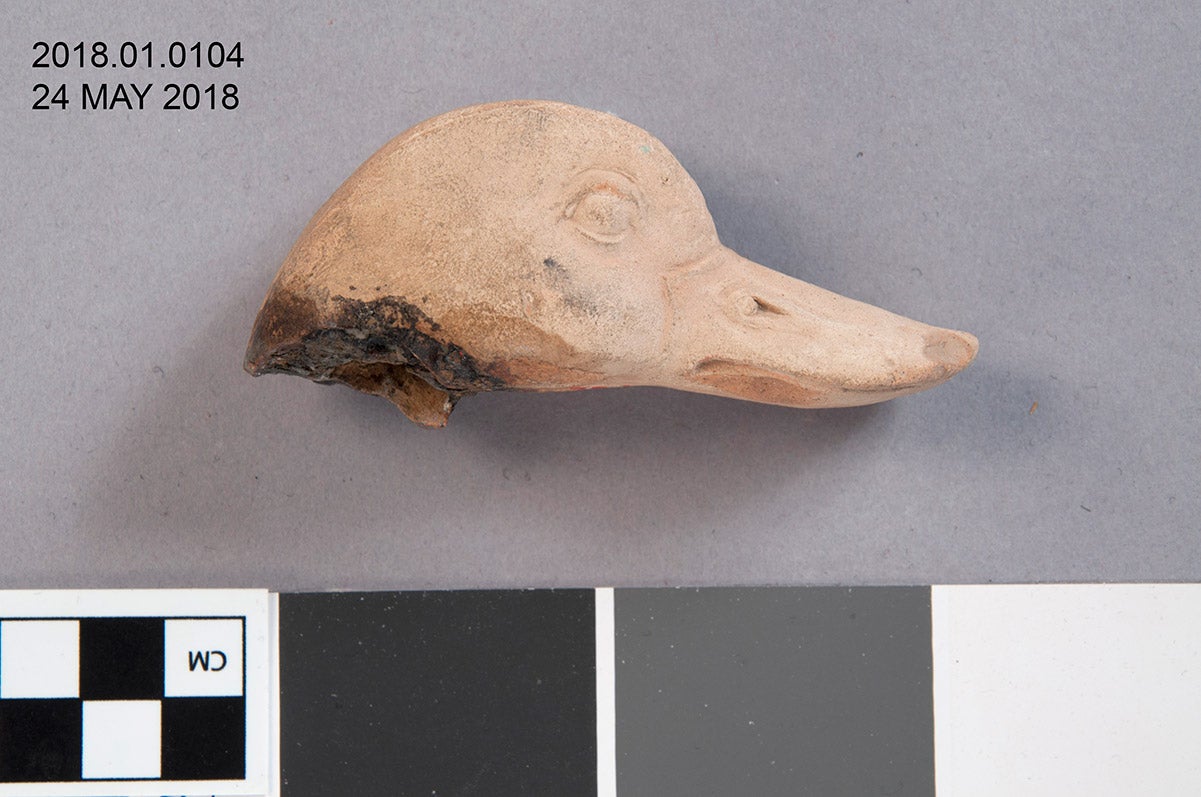by Caroline Roberts, Conservator
This month’s Ugly Object will be featured in the new Kelsey in Focus case, a rotating exhibit space that will highlight some of the Kelsey Museum’s hidden collections. The first In Focus installment features a trio of ceramic duck figurines from Seleucia on the Tigris, a site just under 20 miles south of modern Baghdad that was excavated by the University of Michigan between 1927 and 1937. The duck fragment that’s made our list bears a remarkable likeness to the real thing; I live near a creek and as such share my habitat with a number of these aquatic birds, so I consider myself a fair judge of the high quality of this remaining fragment of duck. Even so, back when it was made this was not a one-of-a-kind object. It was created from a two-part mold, evidenced by a seam that bisects the duck’s face. Even more interesting: one of the duck’s nostrils is “clogged,” seemingly because it was not fully scooped out like the other nostril after casting. These little artifacts of the manufacturing process are fascinating, as is the question of how many of these ducks were made and what they were used for. Look closely and you can see traces of paint in the duck’s eyes and nostrils, and an ancient repair adhesive on its neck. Someone clearly valued this duck enough to stick its head back on when it broke.

Come visit the Kelsey in Focus case on the first floor of the Upjohn exhibit wing, next to the elevator.



Hi, I went to see the the Kelsey in Focus case today. Why is the duck an ugly object? Is it ugly because it isn’t perfect? If you define ugly as not perfect most of the world is ugly. Actually, the concept of ugly is variable from person to person, situation to situation, culture to culture and time period to time period. I enjoy usually enjoy your featured objects but have frequently had difficulty categorizing them as ugly. Florence Johnston
Sent from my iPad
>
Hi Florence,
You’re right, the duck is not at all ugly. In fact, we here at the Kelsey don’t believe that any ancient object is ugly, whether it be here in our museum or anywhere else. We use the term in a bit of a cheeky way to draw attention to the artifacts that might otherwise be overlooked. These are not the show-stoppers, not the crowd-drawing centerpieces of exhibitions. You had just the exact reaction that we want to elicit. We want people to look at the object expecting to see something “ugly,” but to realize that what they are viewing is a beautiful, unique little nugget of history.